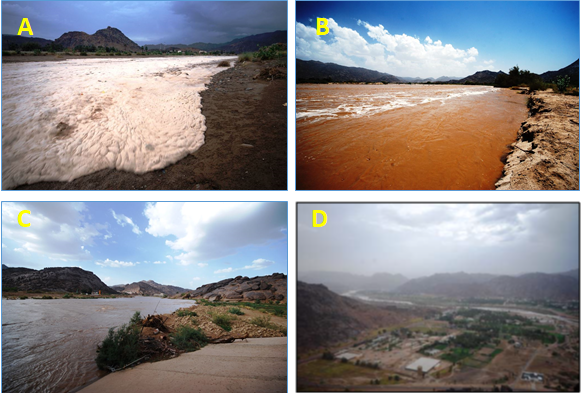Contributions to wadi hydrogeology in arid regions - Experiences from the Arabian Peninsula
2 TU-Darmstadt Institut for Applied Geosciences
P 4.1 in Hydrogeologie arider Gebiete
In the mountain regions of the Arabian Peninsula large wadi systems exist. These wadis are the remains of a huge ancient river system. After the last pluvial period the perennial rivers became ephemeral. In the valleys, wadis developed where surface flow occurs only in direct reaction to heavy rainfall events. Due to the shallow groundwater table in the wadi alluvium and the easy access the groundwater resources are used since historic times.
The alluvium consists of unconsolidated sand, gravel, and subordinate silt and clay sediments. The thickness varies from a few meters up to 100 meters. The alluvium is underlain by igneous and metamorphic bedrocks. The upper part of the bedrocks is weathered forming a regolith zone of about 20 m thickness. Due to the high hydraulic conductivity and storativity the alluvium forms a porous aquifer with a high yield.
The natural groundwater dynamics of the wadis is determined by ephemeral flash floods. These flood events are characterized by unsteady, non-uniform surface flow with a short duration of some days. Investigations revealed that the biggest part of groundwater recharge in wadis is due to transmission losses and direct groundwater recharge from precipitation. Due to this “flashy” dynamics there is no steady state flow situation. During flood events groundwater levels are rising rapidly, afterwards an exponential decline can be observed.
Model simulations revealed that a sustainable groundwater management of these aquifers is possible in which the buffering capacity of groundwater in storage plays an important role.

Photos of a flood event in Wadi Najran on July 10, 2010. A: Approaching flood wave consisting of foam and debris. B: Flood maximum with a high sediment load recognizable by the high turbidity. C: Decaying flood wave. D: Wadi Najran from above during the flood event.

